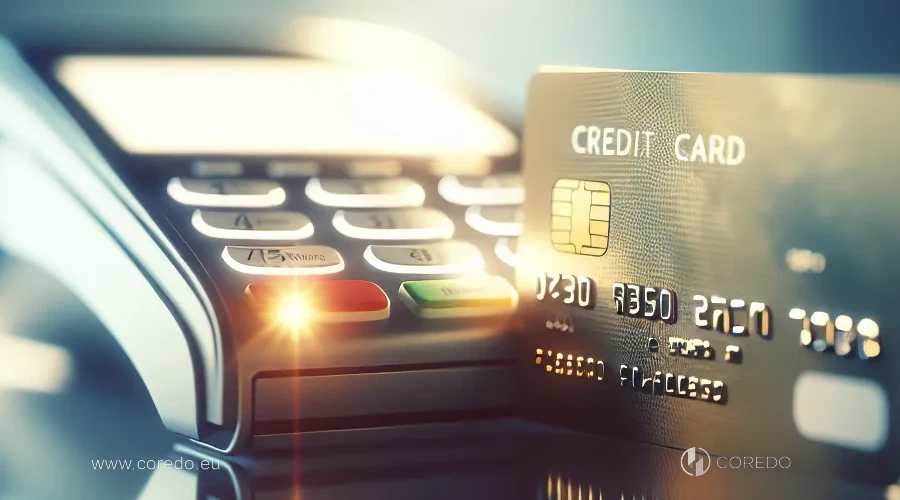Why has the chargeback become an integral part of the modern financial system? How does this tool affect consumer protection and business sustainability? And why is strategic chargeback management not only a matter of financial compliance but also survival in the global market?
In this article, I will analyze in detail what a chargeback is, how the card refund procedure works, the strategic challenges companies and consumers face in Europe, Asia, and Africa, and share practical recommendations based on COREDO’s experience. If you want to not only understand chargebacks but learn to use them as a protection and growth tool, I recommend reading this guide to the end.
What is a chargeback and how does the card refund process work?

Basic principles and stages of the chargeback process
- Chargeback initiation: The client submits a claim to their issuing bank, stating the reason for the dispute (chargeback reason codes).
- Bank investigation: The issuing bank analyzes documents, requests information from the acquirer (merchant’s bank), and initiates the chargeback dispute process.
- Refund: If the claim is justified, the funds are temporarily returned to the client’s card (chargeback life cycle).
- Chargeback representment: If the seller disagrees with the chargeback, they can provide counter-evidence.
- Arbitration: In complicated cases, the dispute is transferred to the payment system for a final decision (arbitration chargeback).
When can you initiate a chargeback: typical reasons
- Credit card fraud: Unauthorized charges, data theft, chargeback fraud.
- Service not provided or item not delivered: A classic case for e-commerce and online subscriptions.
- Double charging: Technical acquiring failure.
- Contract breach: Product not matching the description, refusal to refund.
- Consumer fraud: When a client abuses the chargeback procedure.
Difference between a chargeback and a standard refund
A classic refund for a product or service: a voluntary action by the seller under the return payment policy. Chargeback: a forced procedure initiated through the bank and payment system when parties can’t agree directly, or fraud is involved. For businesses, it’s important to understand: a chargeback automatically triggers a bank dispute over the transaction and can affect the chargeback threshold and acquiring relationships.
How to correctly initiate a chargeback: a step-by-step instruction for consumers

What documents are needed for a chargeback for an online purchase and other cases
- Receipts, account statements, payment confirmation
- Correspondence with the seller (emails, chats)
- Proof of service non-delivery/item not delivered (screenshots, tracking)
- Contract or offer
- Complaint letter to the seller
Chargeback review times and stages in different countries and payment systems
- Visa/Mastercard: Typically 30–120 days from the transaction date.
- PSD2 (EU): Tightened requirements for chargeback life cycle times and transparency.
- UnionPay (Asia): Extended periods up to 180 days are possible, especially for international payments.
Common mistakes when processing a chargeback and how to avoid them
Common mistakes:
- Incomplete document package
- Missing submission deadlines
- Incorrectly selected reason code
- Lack of attempt to settle the dispute directly
Chargeback for business: risks, opportunities, and best practices

How chargebacks affect business: financial and reputational impacts
A high chargeback ratio threatens acquirer blocking, fines from payment systems, and loss of client trust. The chargeback threshold for most payment systems is 1%, exceeding this threshold can lead to a review of cooperation terms or even termination of the contract with the acquiring bank. Financial disputes in e-commerce and chargeback liability shift: real challenges for any international business.
How to protect your business from unwarranted chargebacks and chargeback fraud
- Implementing a multi-level KYC procedure
- Regular transaction audits
- Use of anti-fraud systems
- Transparent refund policy and client communication
- Timely response to chargeback representment
Integration of chargeback processes with AML/KYC and compliance policies
Modern PSD2 standards and international financial compliance requirements oblige companies to integrate chargeback procedures with AML and KYC policies. This not only reduces the risk of consumer fraud but also increases the transparency of financial risk management. COREDO’s experience showed that automating chargeback monitoring and implementing a risk-based approach allow companies to quickly detect anomalies and prevent chargeback fraud at early stages.
Characteristics of chargebacks in Europe, Asia, and Africa: international nuances

Comparison Table: main differences in chargeback across jurisdictions
| Region | Review times | Document requirements | Features |
|---|---|---|---|
| Europe | 30–90 days | Detailed, per PSD2 | Strict compliance, consumer protection |
| Asia | 30–120 days | Depends on the country | Restrictions may apply to transaction types |
| Africa | 30–180 days | Often simplified | Dependence on local regulations |
Practical recommendations: how to effectively use chargebacks and minimize risks

Checklist for consumers and businesses
- Check return conditions before payment
- Keep all transaction documents
- In case of a dispute: first, try to settle the issue with the seller
- If there is no result: initiate a chargeback through the issuing bank
- Use chargeback documentation templates developed by experts
- For businesses: implement regular chargeback audits and monitor the chargeback ratio
- Integrate chargeback mitigation into the company’s risk management
Key takeaways and actionable advice for entrepreneurs and managers
- Chargeback, not only consumer protection but also a strategic risk management tool for businesses
- Proper chargeback mitigation reduces costs, protects reputation, and strengthens relationships with payment providers
- Integration of chargeback processes with AML/KYC and compliance policies is a mandatory standard for international companies
- Use chargeback analytics to identify trends and optimize refund costs
- COREDO is ready to offer tailored solutions for chargeback automation and support in any jurisdiction
Frequently Asked Questions about Chargebacks (FAQ)
What to do if the bank denied a chargeback?
It is recommended to request a written justification for the refusal, prepare additional evidence, and if necessary, initiate an arbitration chargeback through the payment system.
What are the review times for chargebacks in Europe and Asia?
On average, 30–90 days for Europe and 30–120 days for Asia, but times depend on the specific payment system and the type of dispute.
Can a chargeback be initiated for a legal entity?
Yes, but documentation and dispute justification requirements are higher for businesses, especially in B2B transactions and international payments.
How to protect a business from chargeback fraud?
Implement multi-level customer identification, use anti-fraud systems, train staff, and regularly analyze the chargeback ratio.
How is a chargeback related to VAT refunds and tax reporting?
In some countries, refunding funds via chargeback may require adjusting tax reporting and VAT refund. COREDO practice: we recommend consulting tax experts for large refund transactions.
What modern technologies automate chargeback investigations?
Specialized SaaS platforms, integration with acquiring, AI algorithms for detecting chargeback fraud, and analytics dashboards for monitoring the chargeback life cycle are used.